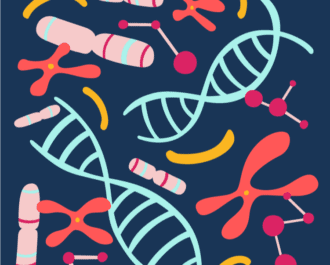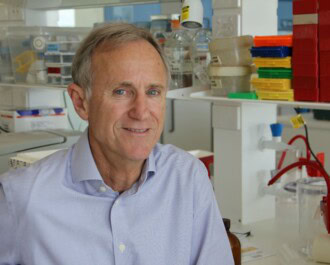
We know that unless we’re an identical twin, we’re each genetically unique. Genes work together to direct the growth, development and maintenance of our mind and body. Until recently that information has been interesting biologically but not particularly useful for anything to do with our general health. Now, thanks to ever-advancing technology, we can ‘read’ all of our healthy and mutated genes and the fascinating story they have to tell about what’s in store for our health and wellbeing.
First, a quick high-school biology refresher: Let’s start with DNA, which contains the information needed to build the entire human body. An organism’s complete set of DNA is called its genome, which is replicated in virtually every single cell in our body. A gene, of which we each have around 24,000, refers to the unit of DNA that carries the instructions for making proteins. Proteins are important because they make up body structures like organs and tissue, control chemical reactions and carry signals between cells. If a cell’s DNA is mutated, an abnormal protein may be produced, which can disrupt the body’s usual processes and lead to diseases such as cancer.
This is where genetic testing has become an interesting and useful tool for making decisions about our health and wellbeing. Tests can be done at an individual level to check for specific diseases where symptoms may already be present, such as Huntington’s or Parkinson’s, or used by individuals with a high family risk for certain diseases, such as testing for the BRCA1 and BRCA2 gene mutations associated with breast and ovarian cancers. These tests are usually only available via a recommendation from a doctor.
Genetic information can also be collected and analysed (sequenced) across large populations, during what’s called genome-wide association studies, which compare genetic information across thousands of people with and without a particular disease. This huge amount of information and data can reveal significant trends and predict our risk for disease, and are currently used to predict areas of the population vulnerable to diseases such as diabetes and cancer.
The sequencing of thousands of genes continues to identify the complex links between genes and disease. It is also fast becoming the foundation for therapies that are designed to target abnormal genes, such as those found in the various sub-types of breast cancer.
It’s because there are so many different types of cancer that cancer genome sequencing is such a powerful tool. Most cancers have a variety of subtypes and differ from individual to individual.
The results from genome-based research are already enabling medical researchers to develop improved diagnostics, more effective therapeutic strategies, and better decision-making tools for patients and providers. That means clinicians and oncologists can determine a strategy for therapy based on specific genetic information about the tumour and the patient’s likelihood of responding well.
Further reading:
More News Articles
View all News


